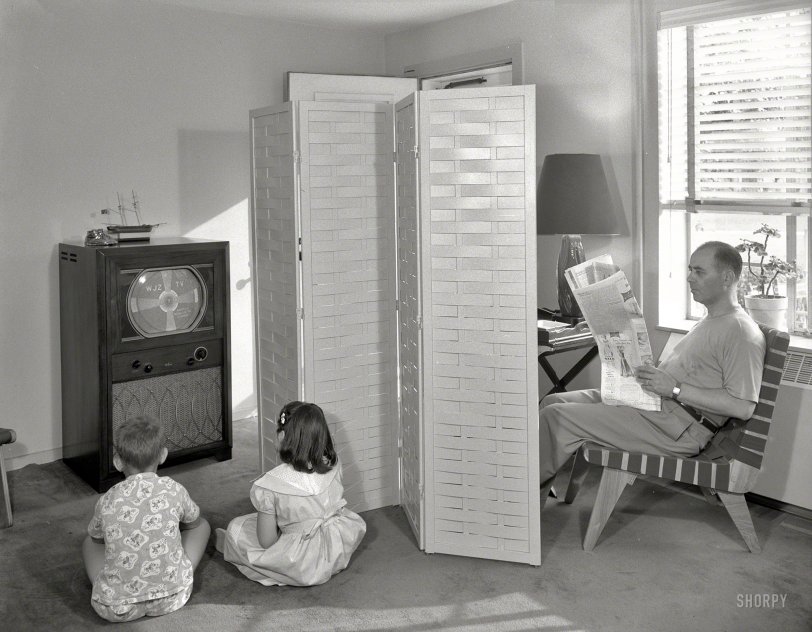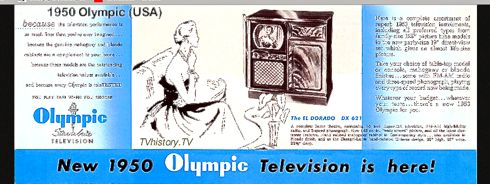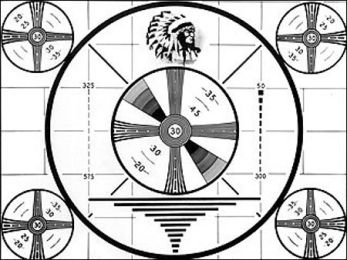


Framed or unframed, desk size to sofa size, printed by us in Arizona and Alabama since 2007. Explore now.
Shorpy is funded by you. Patreon contributors get an ad-free experience.
Learn more.

- Baldwin 62303
- Baldwin VO-1000
- Cold
- No expense spared
- Tough Guys
- Lost in Toyland
- And without gloves
- If I were a blindfolded time traveler
- Smoke Consumer Also Cooks
- Oh that stove!
- Possibly still there?
- What?!?
- $100 Reward
- Freeze Frame
- Texas Flyer wanted
- Just a Year Too Soon
- WWII -- Replacing men with women at the railroad crossing.
- Yes, Icing
- You kids drive me nuts!
- NOT An Easy Job
- I wonder
- Just add window boxes
- Icing Platform?
- Indiana Harbor Belt abides
- Freezing haze
- Corrections (for those who care)
- C&NW at Nelson
- Fallen Flags
- A dangerous job made worse
- Water Stop
Print Emporium
Television Screen: 1950

July 12, 1950. "Hilda Kassell, East 53rd Street, New York City. Father reading newspaper, two children viewing television." The test-pattern tone is especially hypnotic this morning. Photo by Gottscho-Schleisner. View full size.
Pattern
I hated daytime TV in the '50s. You'd be home sick from school and all that was on would be soaps and Queen for a Day.
You'd be lying there bored to death with onions that your Mom put in your socks, I have no idea what they were supposed to cure but Mom must have known.
Subway fold
Dad - or the model playing dad - is probably a regular subway rider. That's the NY subway fold that I learned from my father. When you're on a crowded train, there isn't room to open the paper all the way. So you fold the pages in half lengthwise.
The Ultimate Home Theatre!
It's got both a small screen AND a big screen (for Dad to hide behind)!
Sitting that Close
I was a child in the late 1960s. Whenever I would watch television my parents always supervised me because they wanted to ensure that I didn't sit too close to the set. They were convinced sitting too close to the television would cause me to develope leukemia or it would ruin my eyesight.
The first thought I had, when I looked at this photograph was the sound of my mother's voice "Don't sit so close to the TV!"
By the time I was 16 years old, I did have to start wearing glasses which gave my parents an "I told you so." moment. They were convinced that my lazy eye was a result of sitting too close to the tv when I watched Captain Kangaroo as a four year old.
Step Up
Olympic was a recognized radio brand in the 1960s. Its TV line was strictly promotional. The attached ad shows a Radio/TV/Phono combo that probably sold in the $300-$400 price range. A comparable Magnavox unit sold for 2 to 3 times as much.

Olympic Radio & Television
was a trademark of Hamilton Radio Corp., established NYC 1941. Hamilton purchased the Olympic trademark from American Bosch Radio the same year. In 1956 Olympic Radio & Television was still operating as a division of Unitronics Corp. of Long Island City. It probably disappeared the following year when Unitronics was absorbed by Siegler, which then merged with Lear Inc.
Multiple photos
Other Gottscho-Schleisner photos relating to Hilda Kassell can be found online. There's one from about this same time showing her nursing her baby in front of this window, one from 1948 of what I would presume was her former residence at 50 East 10th Street, and an undated interior view of what may be her country house in Croton, New York. As there also are some references to photos by her, my best guess is that she worked for Gottscho-Schleisner or at least was associated with the company in some way. Hence their interest in her domestic life.
[Hilda Kassell was the designer whose business commissioned these photos. The people in them are models; the grander homes are those of her clients. -Dave]
Good Question
Wonder why the Indian head shot was used. It seems fairly universal, but why?
[A story about the original artwork and its survival is here. -tterrace]
Thanks, wonder why the fellow in '38 made that choice. Just because? Line definition quality? Thanks again.
Did everyone
have a ship and brass baby shoes on top of the TV in the early 50's? I know we did.
Test Pattern Indian
We got our first TV in 1951 when I was 3 or 4 years old. I remember spending a lot of time staring at the Test Pattern Indian, and even at that early age wondering what the hell an Indian was doing in our TV, and when was he going to DO something. Maybe I really WAS hypnotized by the tone.

It's all relative
Compared to nothing-zip-nada, a test pattern was interesting, if only because it indicated that the set was ready to erupt into entertainment when programming began (usually, late afternoon). And it was our technological friend, enabling the painstaking setting of horizontal and vertical hold, contrast, brightness, and whatever quality brings about absence of "snow," all before Buffalo Bob and Howdy appeared.
$419.95
Looks like a Zenith, Lexington model without cabinet doors. Cost is four weeks pay for the average factory worker in 1950.
[It's an Olympic. -tterrace]
Blank Stares
There's nothing quite like pretending to read the morning paper while the kids pretend to watch TV.
There really is nothing on TV
In this case, not only are the kids staring at a test pattern, they're staring at a fuzzy test pattern. At first I thought this was because WJZ is a Baltimore station, but in 1950, it was the ABC flagship station in New York.
Attention Span
And so it begins. The dumbing down of our children.
























On Shorpy:
Today’s Top 5